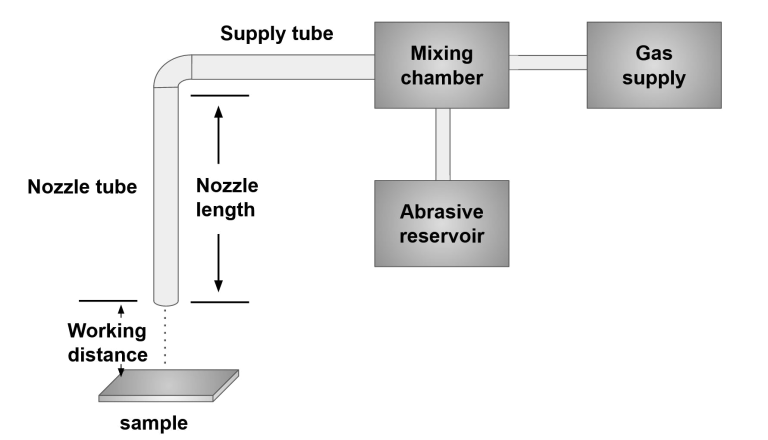Sand Erosion
Within our cooperation with Airbus X-Labs SurfLabX operates the Airbus Plint TE 68 gas jet sand erosion rig for various research and characterization topics.
Sand erosion tests according to ASTM G76-18 (Standard Test Method for Conducting Erosion Tests by Solid Particle Impingement Using Gas Jets, DOI: 10.1520/G0076-18)

Sand mass flowrate
2 g/min
Standard impact speed
55 m/s
Sand particle materials
Quartz sand, grain size 60/85
Impact angles
0° – 90°

The Plint TE 68 gas jet sand erosion rig is based on the gas blast method at which the particles are introduced into a gas stream and accelerated along a nozzle to achieve the required test velocity. The sand particles are dosed into the groove of a rotating disk by using a funnel. The sand particle feed rate can be set by adjusting the speed of the rotating disk. Using the Venturi effect, the particles are sucked off the conveyor disk, mixed with compressed air in a mixing chamber and accelerated along a nozzle to the desired speed. The sample is mounted in a holder which allows an adjustment of the impact angle between 0° and 90°. The distance between the sample surface and the nozzle orifice is 20 mm. The speed of the sand particles can be adjusted based on the pressure difference between the nozzle inlet and outlet. A cylindrical nozzle with a diameter of 5 mm and a length of 308 mm is used for the sand erosion tests. Usually, the tests are performed with a sand particle speed of 55 m/s and quartz sand from David Ball (Cambridge) with a grain size of 60/85 (average diameter of approx. 220 μm). The used quartz sand is round and slightly elongated.